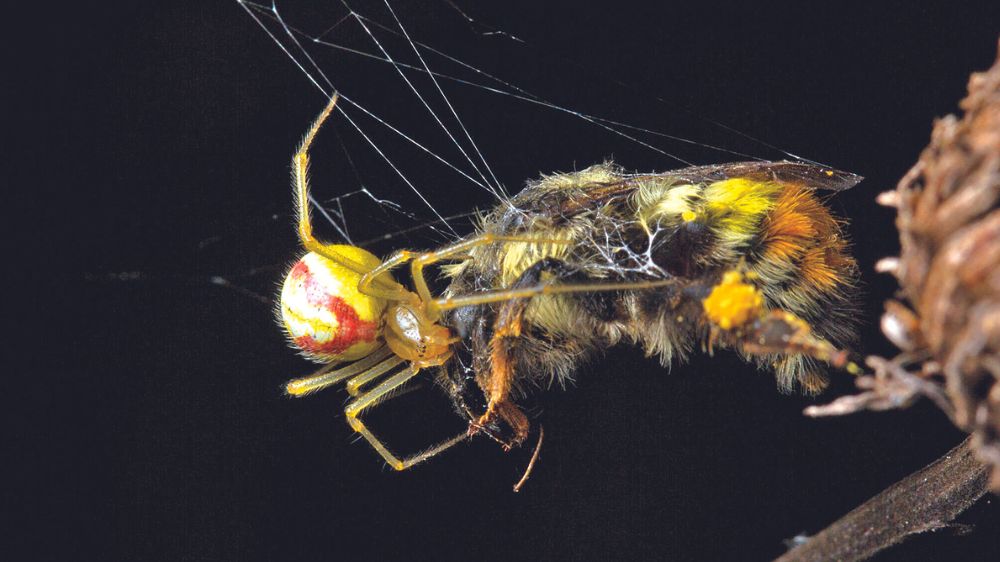Eight-legged candy-striper killers prowl before sunrise
Candy-stripers were also known thieves, poaching prey from the webs of neighboring spiders, including, as Dr. Scott and Dr. McCann observed, black widows. Still others had noted candy-stripers using no web at all while nabbing nimble leafhoppers.;

In hospitals, candy stripers are selfless volunteers. Candy-stripers of the eight-legged variety, however, appear not so benevolent. New research reveals that two species of candy-striped spider have secret night lives, leaving their cobwebs to carry out violent predation after dark. Two scientists published their discovery in the journal Ecology. One of them, Catherine Scott, an arachnologist, conducted this research while working on her doctorate at the University of Toronto, Scarborough. She says these common spiders, native to Europe but now widespread in the United States and Canada, are known for doing “fairly normal web-building spider stuff,” and for the genes that cause their stripy features, but their active hunting of big prey at night had escaped notice.
Her colleague Sean McCann, also an arachnologist who was then at Scarborough, first suspected the spiders’ clandestine habits.
Dr. McCann is an avid macro photographer with a penchant for snagging beauty shots of snoozing bugs on dead vegetation during predawn hours. While working on black widow spider research on the Tsawout First Nation territory on Vancouver Island in Canada, Dr. McCann discovered mass carnage being carried out by candy-stripers during his morning photo shoots on the beach. The smoking gun was the discovery of numerous sleeping wasps entombed in web, their innards sucked dry. This grisly scene prompted the two researchers to take a closer look.
First, they checked to see if other scientists had documented candy-striped nocturnal killing of sleeping insects. They had not. Some, like the English naturalist W.S. Bristowe, had noted in the 1930s how this species lurks by its web, ready to pounce and hurl sticky threads after sensing vibrations. This was not their only previously recorded hunting strategy, however.
Candy-stripers were also known thieves, poaching prey from the webs of neighboring spiders, including, as Dr. Scott and Dr. McCann observed, black widows. Still others had noted candy-stripers using no web at all while nabbing nimble leafhoppers. As for night wanderings, however, Dr. Scott and Dr. McCann may be the first to document candy-stripers’ slaying of sleeping prey. “It all happens very rapidly,” Dr. Scott said, giving a play-by-play. Upon contact with the sleeping bug’s cuticle, candy-stripers pull sticky silk from spinnerets in their legs, slinging this glue droplet lasso around the insect. Then, as they alternately inject venom and wrap with more silk, “it’s game over for the wasp,” said Dr. Scott, her love for spiders evident in a large black widow tattoo on her forearm during a video call.
She added that “These spiders have very poor vision,” so on nighttime forays, they most likely navigate by touch and smell, sensing their environment via taste hairs, which function like a nose-mouth organ at the ends of their legs.
Dr. Scott and Dr. McCann say this new discovery underlines the importance of taking time to be curious and “simply watch,” something modern ecologists rarely do, they argue. It took almost 100 years before anyone reported the remarkable marauding behavior of these extremely common species, prompting them to wonder how many other spider mysteries are yet unspun.
Visit news.dtnext.in to explore our interactive epaper!
Download the DT Next app for more exciting features!
Click here for iOS
Click here for Android

